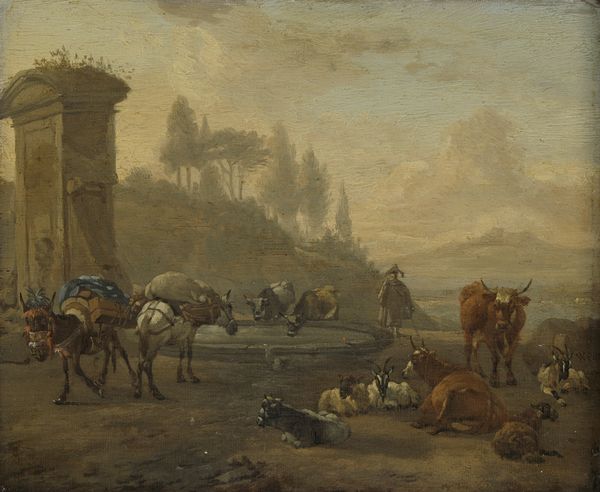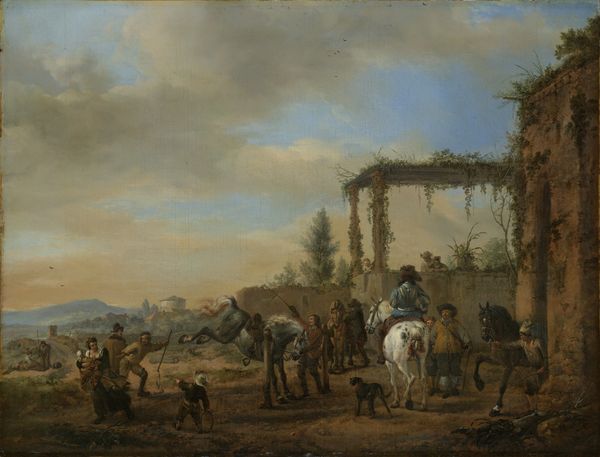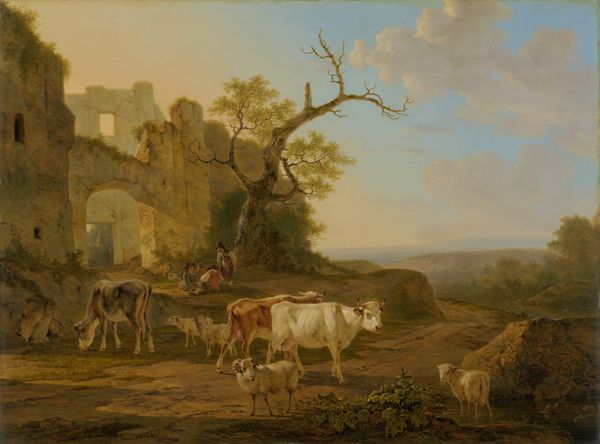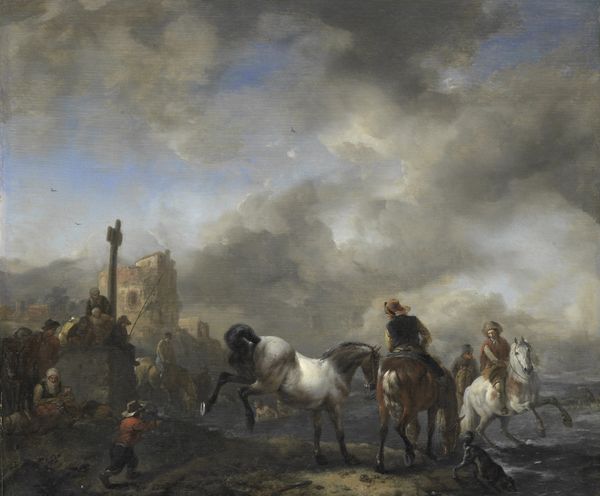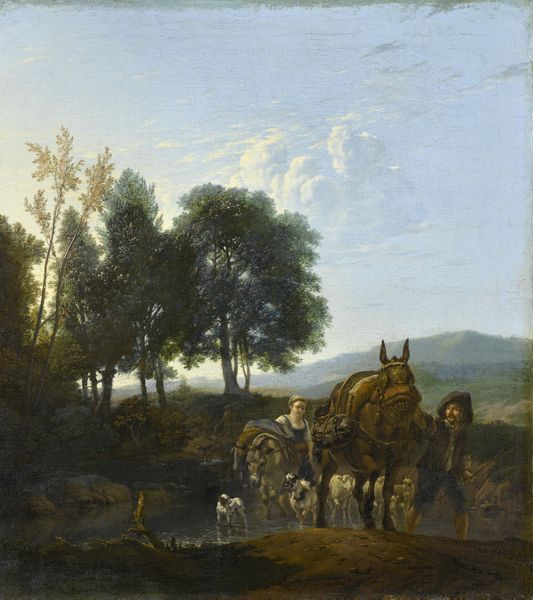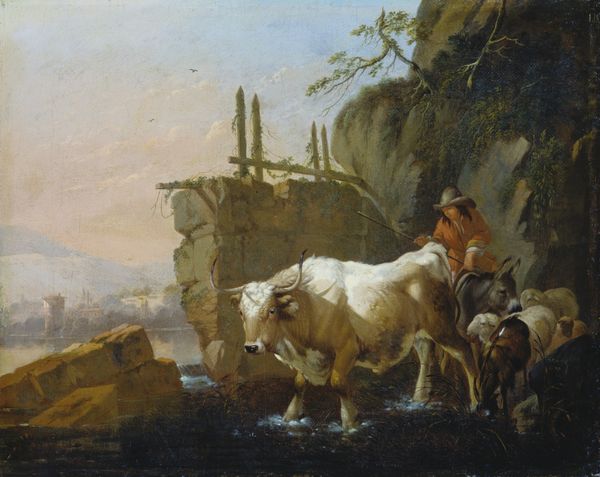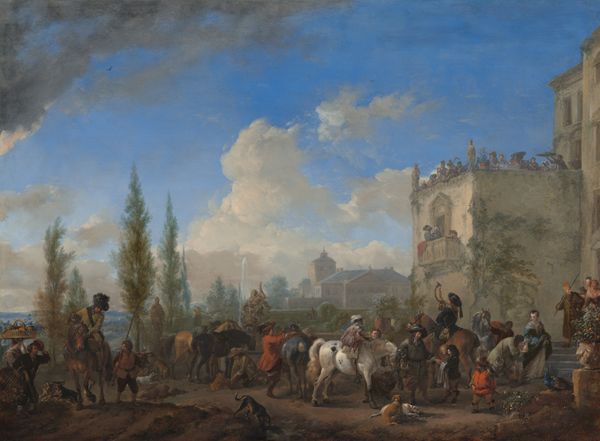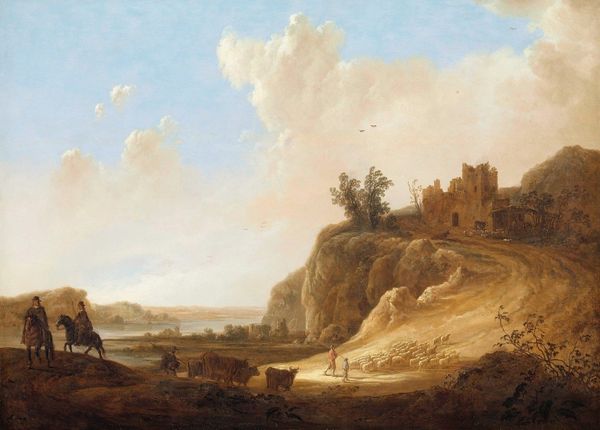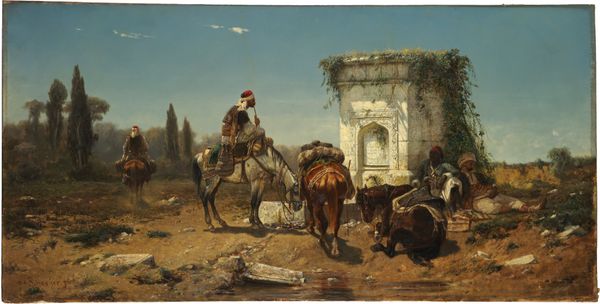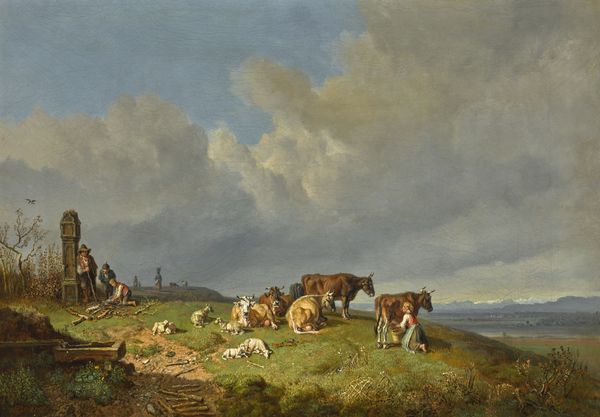
Cattle Watering at a Fountain on the Via Appia Antiqua, the Ruins of An Aqueduct in the Background
0:00
0:00
oil-paint
#
oil-paint
#
landscape
#
oil painting
#
romanticism
#
genre-painting
#
watercolor
#
realism
Copyright: Public domain
Heinrich Bürkel painted ‘Cattle Watering at a Fountain on the Via Appia Antiqua, the Ruins of An Aqueduct in the Background’. Note the striking contrast between the ancient ruins and the contemporary figures. Bürkel’s composition relies on the interplay between horizontal and vertical elements. The Via Appia, with its paving stones extending into the distance, establishes a strong horizontal base, while the aqueduct ruins punctuate the skyline with their vertical presence. The muted tones of the landscape—browns, grays, and subdued greens—create a sense of timelessness, almost elegiac. The herd of cattle and the herdsmen introduce movement and life, disrupting the stillness of the ruins. Semiotically, the ruins represent a bygone era of architectural and engineering prowess, while the cattle symbolize nature's continuous presence and renewal. The fountain acts as a meeting point between these two worlds, where the old provides sustenance for the new. Notice how the light filters through the scene, casting shadows that accentuate the textures of the stone and the dust kicked up by the cattle, further blurring the boundaries between past and present. Bürkel invites us to reflect on the cyclical nature of history.
Comments
No comments
Be the first to comment and join the conversation on the ultimate creative platform.
